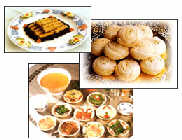Temple Fair

The most important holiday for the Chinese is the Chinese New Year, also called the Spring Festival. During the festival period, everyone goes back to their hometown and spends several days with family, and people hold many celebrations.
Beijing has several fairs during the period. The fairs are held at various ancient temples, so they are called "temple fairs." Temple fairs, originated along with the development of Buddhist and Taoist activities, are a kind of mass gatherings that integrate religious worship, entertainment and commerce.
Temple fairs in Beijing have a very long history, and saw a boom especially during the Ming and Qing dynasties (1368-1911) as well as the Republic of China (1912-1949). Major temples all have their own festivals, some of which are held regularly. During the Spring Festival, temple fair is one of the most important activities, and a traditional cultural event that features all kinds of Chinese folk art. So far, there have been more than 10 major temple fairs held each year in Beijing.
In traditional temple fairs around Beijing, there are performances and booths demonstrating and selling traditional arts and crafts. The fairs have lots of games to play, food to eat, performances and lots of people. In the temple fair you can taste numerous kinds of local snacks, court food and other dishes.

Most temple fairs feature dragon and lion dances, waist drum dancing, lotus blossom fairy dances, ground and clam dancing as well as other folk performances, and some even stage traditional wedding ceremonies.
In rural areas, the temple fair is an excellent opportunity to capture some color in an otherwise fairly drab country.
For foreigners, temple fair is definitely a cultural experience, because it airs Chinese cultures from a very detailed perspective. While enjoying the samplings of Chinese delicacies, you can appreciate craftsmanship and artworks displayed by local artisans.










